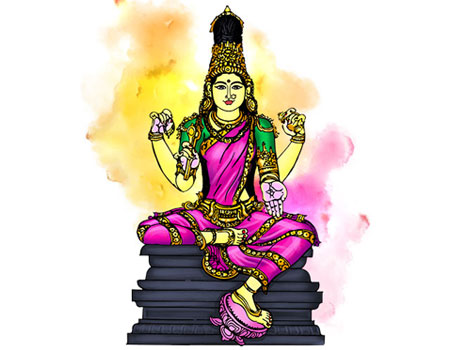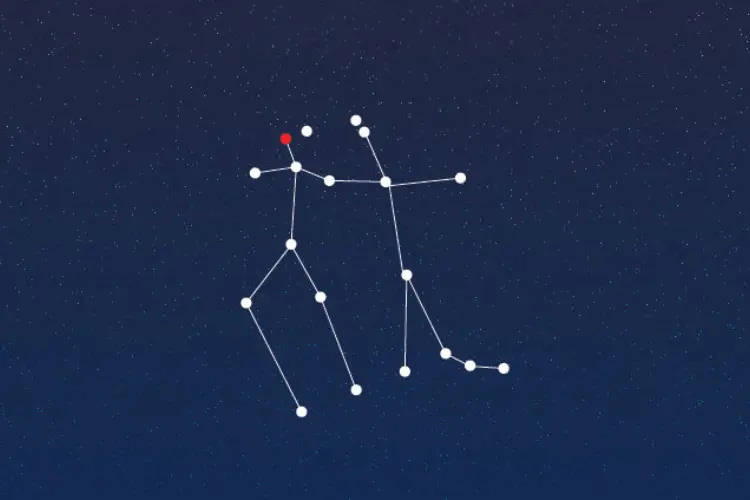#PURNAVASU #NAKSHATRA
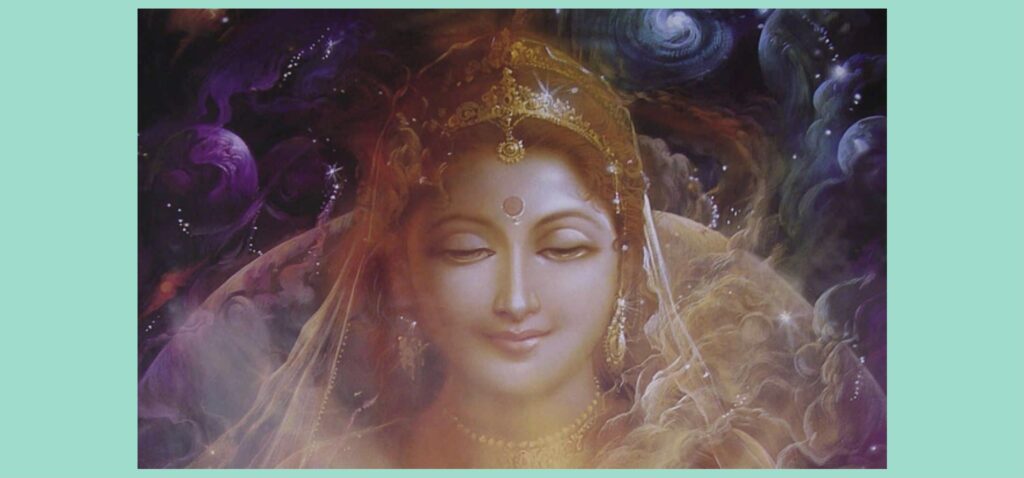
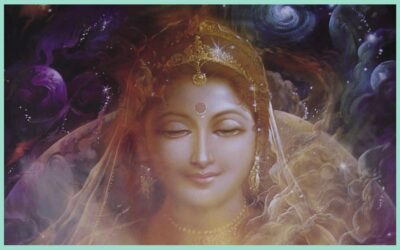
Purnavasu is the celestial realm of infinitely repeating cyclical patterns. Purna means to repeat and Vasu means to shine, show and reveal. And so, this Nakshatra is the revealer of cycles and patterns.
What cycles and patterns do we repeat?
What cycles and patterns of our lives are being revealed to us?
The teaching of Purnavasu comes, by showing and revealing to us, the patterns that we live within and are repeating.
Repeating actions breed repeating results and weave the matrices of reality.
We don’t always see the reoccurring patterns that we repeat and follow when we ourselves live in the midst of them.
The work with Purnavasu Nakshatra is concerned with getting insight into the roots that underlie the repetitious formations of our soul. Inner creates the outer and vise versa.
When we become aware of the repetitious installations in the cyclic geometry of our soul, then the very nature of our personal reality is brought into question.
Revealing of the repetitious cycles is the first step towards liberating ourselves from them.
The cycles that we repeat, begin as a psychic imprint, that in turn become a pattern in our soul. This can further manifest itself into our feelings and then find expression in our behavior, which in turn shapes and forms reality for us.
The origins of our cyclical patterns is a deep inner study. Some of our cyclical patterns may be picked up through ancestral codes of conduct that we have inherited through the energetic line of our heritage.
We may also unquestioningly inherit and move within cultural and societal codes and patterns.
Consider if you will… if we were transplanted to a culture with a code and pattern different to what we know, we would most probably question it.
Say for example, that we were transplanted to a past era with another pattern and structure altogether…. We might, and most probably would – from our present vantage point – call some of the patterns, mysoginist, oppressive, racistic, fascistic and brutally warped.
We would not even need to go back in time to step into places where such patterns are repeating themselves. The modern age offers an ample variety of places with patterns that move within the above aforementioned ‘isms’.
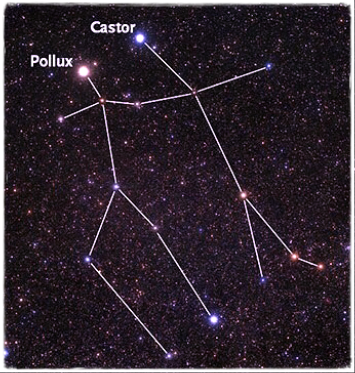
Purnavasu Nakshatra’s 4 Padas, (steps) span from the constellation of Gemini into the first degrees of Cancer.
The stars of Purnavasu are known as Castor and Pollux who are the celestial twins of Greek mythology. Although from another mythology, these two twins are worth mention here, as they present some pertinent themes of Purnavasu.
#Castor and #Pollux are the children of Leda.
The famous story of Leda and the swan is rather well known in many circles, from ballet to feminism to renaissance art.
The Greek mysteries tell us that Castor was the mortal twin and Pollux was the immortal twin.
Zeus disguised himself as a swan and mated with Leda, who in turn layed eggs from which the twins were born. The immortal Pollux was born of Zeus and the mortal Castor was conceived through the mortal union of Leda and her human husband.
And so the mortal twin Castor remained on earth, while Pollux lived with the immortals on Mount Olympus.
Esoterically, we can say that Pollux represents the etheric plane, while Castor represents the echo of the ether upon the earth plane.
We will cover this principle of echoes and exchange further and deeper in the section below, where we will consider the symbol of Purnavasu, which is the ever returning arrow.
When Castor died, he was reunited with his twin brother in the stars. A peculiar deal was struck with Zeus, that they could cyclicly exchange places between the earth and the etheric plane.

And so, in an eternal cyclical rhythm, the twins would alternate between the ethers and the earth.
Each time one brother would die, they would be together for a period and shine bright together, before the other would move to the earth plane, and the ever repeating cycle of exchange would go on.
The whole theme of Purnavasu is the ever repeating cycle.
The word Purnavasu could well be translated as re-manifesting, and understood through the story of these twins.
In the following sections, we will look further and deeper into rhythm and cycles
Patterns and geometry of soul may be invisible to those who live in the midst of them.
Our ancestry, education, culture, religion, generation and gender, to mention a few things, are all areas that are imbued with patterns and geometric structures, that if not unmasked, can become a repeating cycle that crushes liberty and creativity of spirit.
The Tantric could be called an inter-dimensional voyager, who relinquishes the soul from the imposing reflections put upon it by the kaleidoscopic masks that cover the face of the Goddess. Shakti is power, she is the Goddess who gives birth to endless coverings.
Her coverings can become patterns and confining codes of conduct.
The Yogin aligns to the naked Mudra that strips themselves of the patterned confining coat of conduct.
The patterns and codes that shape our experience of reality are made up of psychic energy. Psychic energy might sound like a flimsy esoteric term of sky-walking, but it is the causal root of reality and action.
Psychic energy patterns become convictions. Some of those convictions have spurred genocides and atrocities, upon not only human life.
Psychic energy patterns then, are nothing flimsy at all. Almost invisibly, they verily define personal and collective reality.
The Yogin takes nothing for granted and explores the most established and accepted codes and patterns of so-called normalcy.
We become part of the structures that we create. Being liberated from them does not mean that we can’t, or don’t, have the option to function in them.
Not living with structures is not the same as rejecting them because we are incapable of living with them.
But rather, being liberated from structures means, that we are not constrained by them.
Not being constrained by them, would actually give us the autonomy to move in and out of them.
Not being ruled and constrained by psychic structures does not mean that one denies and rejects them, this is indeed a point to ponder.
The Yogin is a magician who learns to work with psychic structures. The Yogin trains themselves to be able to put the mask of structure on to suit the situation if needed. A mask here, can be thought of as a psychic energy formation.
The Yogin tries to be careful not to be defined by the mask of structure that (s)he wears.
Masks come in many shapes and sizes, some ‘good’, some ‘bad’ and some ugly or beautiful.
For the Yogic voyager, each conviction and station of being is but a mask upon the naked truth.
When we wear a mask and can no longer remove it, then we have lost the naked truth and come into the world of masks and identifies.
Tantic practice is an investigation of the masks that eclipse the naked truth.
All masks fall in time.
A mask can wear us if we are not vigilant.
We may be busy shaping the mask in the hope to wear it eternally?
Such things are part of the Tantric investigation.
The symbol of Purnavasu is the ever returning arrow, returned cyclicly and eternaly to the quiver.
This is the arrow of #Ram, who is the great solar warrior and weilder of the bow and arrow.
Raam is considered the greatest of all masters of the bow and arrow. His arrow represents the quality of absolute focus.
Raam is the ultimate warrior of mystic and legendary status, his birth star, in point of fact, is Purnavasu.
Every arrow that Raam shot is returned to the quiver, in the eternal cycle of the laws of exchange.
What is sent out, returns back to us. What we give comes back.
An example of a pendulum obeys this law perfectly.
The swing in one direction, is mirrored in the other. If we send out the energies of precise focus and intention, they are returned to us.
Contrarily, if our energies are muddled, a muddled energy returns. The law of echo and reflection is intensified on a Purnavasu Moon.
The realm of Purnavasu give us an opportunity here to work with our deepest intention. Perhaps the one that has been wished for and forgotten, or perhaps the failed one that we gave up on, and therefore never reached fruition.
An intention of what we truly need, is brought to us by Purnavasu Nakshatra, results come under rituals of this Moon, if our focus is honed and applied.
Ritual is an act of applied focus. In ritual where Purnavasu Bakshtra is strong, the Yogin works with intention amongst other things. Making an intention on a Purnavasu Moon night is like planting a seed. A seed needs care and focused awareness to plant and bring to fruition.
The subtle energy patterns in our soul, that echo and reflect back to us cyclically and repeat themselves, can effect us both personally and collectively in a variety of ways.
They may keep us in unhealthy patterns. When we find ourselves living over, and repeating a well known pattern. It may be of liberating benefit to us, to investigate and look into its foundations.
Cyclic patterns in our soul might run like clockwork. They might repeat themselves with regularity when particular phenomena come before us and entice a predictable effect from us.
For example, we might have a ‘psychic-sore-spot’ that if touched in a certain way, is certain to react in a predictable fashion.
We might come to know our reactions very well and even come to endevour to fabricate our lives so as to remove the ‘touchers- of-our-psychic-sore-spots where possible.
We might create a mentality of avoidance and justification… perhaps thinking we are free in our choosing, but rather having landed into a realm of a duality between attraction and aversion… It is in that realm we come to know of the soul that dwells both within and beyond attraction and aversion.
It is of course an ‘option’ and to step out and away from things that cause us to react like clockwork. But there is also another option of facing the things that cause us to react with an autonomy that is not based upon the predictable pattern of repeating cycles. This autonomy is the secret hidden in the breast of Purnavasu Nakshatra.
When we cut something away too much, we might end up cutting part of ourselves away and reducing the motion of our spirit.
The path of the victim is chosen in fear and helplessness.
A victim does not only imply a downtrodden impotent state of being. A victim might be a leader of their lives who has steered events to such an extent that their position of avoidance of their triggers, almost promises them never to be touched.
And when the trigger should appear, one would take to the strategy of avoidance and therefore turn away from their own power that comes to them in a guise they would rather not see.
This we could say is the masquerading victim. They might be at the top of their game, whatever it is, but they have no freedom of motion, for when the revealer of their pattern shows up, the clockwork predictability of their inner pattern of psychic cyclical repetition is revealed, and causes them to act with avoidance strategy.
This we could call the spiritual aristocrat. It is quite an apt description of one who protects their assets, but never opens the accounts of their soul to discover a reality beyond the spiritually provincial constrains that they have invested in.
Our psychic patters my range from anything between highly destructive and self sabotaging, to functionally routine and manageable. What lays beneath and beyond the cycles of Karma is the voyage that the Tantric takes. The Tantric takes a step through the matrices of personal and collective reality, as they dance through the cycles of Karma.
When the unconscious dance becomes conscious, then infinity reveals itself.
The cyclic nature of patterns is the insight that the Nakshatra Purnavasu brings to us.
If we have the liberty to select rhythms and patterns of being, then we are invested with a deep spiritual autonomy.
But, if we are caught in patterns that define our reality, then we become devoid of autonomy.
Let’s not intend at all to get fatalistic and final about the patterns and structures that we carry within the psyche. These structures may be deeply intrenched in us and get revealed cyclicly though the course of our lives. But the cyclical wheel of Karmic effect, also carries a Karmic cause, that is in fact, something not set in stone, though it may indeed be set in the ether.
The Yogin is known in Hindi as Akash Pahane, this means clad in sky, or more accurately, dressing in the ether.
Many Yogins in the classical sense, emulate the great nakedness and literally do not wear any clothing. There are several lines of Yogins in India who honour the great spiritual nakedness of Shiva by never covering themselves.
Shiva is called Digambaar, this is a deep word with many connotations, on a basic level, it is interpreted by the ‘dictionary’, as one who is sky-clad. It means naked, but it’s nakedness is it’s formlessness of having no acquaintance to, and not being limited by the structures of psychic forms. The deep wisdom of Purnavasu shows a path of Digambaar
A naked Yogini of the past was called Akka Mahadevi, and is held in heigh esteem by the Yogins.
Akka Mahadevi was a naked wandering mystic who lived in the 12th century, known for her rejection of convention and her devotional verses of mystical poetry.
An ever reoccurring cyclic symbol, found through her poems, is the mystical nature of Shiva who she repeatedly likened to the scent of the Jasmine flower.
Akka Mahadevi was a radical outside-of-the-box Yogini, who rejected societal standards as illusionary coverings and mirages upon the naked truth.
In her poems she addresses all manner of mystical and emotional themes. She is often erotic in her depiction of the Yogic path, and forthrightly addresses the illusions of sexual and gender stereotypes, as well as the illusionary institutions that wrap themselves around such stereotypes.
Akka Mahadevi is a figure of mythological proportions, and much about her is gleaned from her poetry. She is said to have lived a simple life of yogic devotion in the mountainous wildness, befriended by Mother Nature.
As we see in the picture of her above, her hair was said to be very long.
Her verses hint at the nakedness of truth without form. A truth that is free of structures and the cyclic forms of Karmic covering.
Here are a couple of her wondrous poems that point to the wisdom of Purnavasu and reality beyond coverings
You Can Confiscate
You can confiscate
money in hand;
can you confiscate
the body’s glory?
Or peel away every strip
you wear,
but can you peel
the Nothing, the Nakedness
that covers and veils?
To the shameless girl
wearing the White Jasmine Lord’s
light of morning,
you fool,
where’s the need for cover and bejewel?
⭐️
People, Male and Female
People,
male and female,
blush when a cloth covering their shame
comes loose
When the lord of lives
lives drowned without a face
in the world, how can you be modest?
When all the world is the eye of the lord,
onlooking everywhere, what can you
cover and conceal?
The ritual nakedness and the Tantric work of stripping away patterns is ever a reminder that structures and patterns are something pliable, in that they can be altered and played with. They may live within us and we within them. But when structure gains an immovably fixed status upon the sweep and sway of the spiritual heart, then we are closed to the creative liberty of the Goddess
For the Tantric voyager, what seems fixed, can become pliable and offer previously unknown spheres of being.
Aditi is the great mother Goddess who dwelleth in the heart of Purnavasu Nakshatra… it is her celestial abode. She is the principle of the eternal cosmic mother.
Aditi is the mother of all the Devas and the 12 Adityas. The 12 Adityas are the Solar deities, who through the course of a year, manifest as the 12 aspects of the sun in its resonance in each lunar month.
The rebirth of the same essence in endlessly cyclical repetitions is expressed in Aditi. We see this most boldly expressed in the apparently boggling notion that Aditi is the mother of her own father. Her father is Daksha, who is in turn the father of the 27 star sisters who are the Nakshatras. Aditi is his mother.
This is a deep subject of meditation that reveals further and deeper the secrets of Purnavasu.
The Yogin takes time to meditate and ponder on this notion of the mother who mothers her own father. By such contemplations of inner celestial intuition, the Yogin psychically opens to the deeper secrets of Aditi
When reading these Yogic mysteries and mythologies of stars and Goddesses, it is easy to skim over them with the conscious mind. When we skim over these mystic notions, then they remain just that. Their roots then don’t bloom any deeper into inner grasp. As such, they may become easily forgotten facts of fascination.
To retain a grasp of these subjects, and tap the inner reservoir of deeper meanings. Meditation upon the subject is required. This is a secret to not easily forgetting these things and gaining a deeper grasp of their mysteries.
Aditi is the etheric Akash element that pervades space invisibly. It is the essence at the root of things.
When we don’t retain a system of wisdom, then we are but skimming the surface with our overland consciousness.
By bringing ground to the underground roots of soul, we deepen into a foundation that creates a solid tower of wisdom, that is not easily dispersed in the winds of life’s motions.
Aditi brings us the secret of grasping a system, by reminding us of meditating on digesting that which we imbibe. Scoffing things down without touching the sides, is the great superficial evil of the high speed age.
Akash is the fundament. It is subtle spacious energy, yes, but it is also that which underlies gradually manifesting form, call it the causal plane if you will.
#Aditi is the #queen of #etheric #energy. Her all-pervasive element pervades all space. The Yogins refer to this as Akash. Akash is an element of extreme subtlety. Interestingly we see that the subtle element of Akash is also the element of the planet that is assigned to Purnavasu in Vimshotri Dasha. We will consider this in the next section.
Akash confers great sensitivity and is an impressionable all pervading essence that imbues all things. Purnavasu is indeed a time of sensitivity and realisation of them subtle realms.
Aditi has the wisdom of every Moon cycle, and is thus held in highest esteem by the Yogins. After all, she mothers the Aditya’s, who be the 12 Solar deities of the Moon cycles of the year.
Each lunar month is a season in itself. The Yogins work ritualistically through the seasons of the Moon cycles.
They do this in their ritual calendar with its encoded wisdom.
For the codes to be birthed unto a living breathing tangible life, deep travel is needed,… pondering, contemplation and meditation, if you will.
Otherwise we merely participate in surface maneuvers and see the Yogic stories as fantastical notions that have nothing to do with us.
In fact, they have everything to do with us, and are doorways to principles that we face in our souls journey through infinity.
A scholarly approach is not needed, but rather a deep introverting sense of pondering.
The Yogins have called this Swadhyaya, which is sometimes taken to mean to read scriptures and sacred works. The deeper meaning though, is to contemplate, meditate and ponder upon the mysteries, until the door of intuition is approached.
”All that exists outside, exists within”, is a well used Yogic axiom.
Perhaps it actually needs more use and less mention?
Aditi knows each of her ‘sons/suns’, and the Moons that they are bound to. At a later date we may consider each of the Adityas in deeper detail.
Aditi means unlimited, and unbound. She is the unbound mother of the Devas.
She has a sister that is called Diti, which means bound and limited. The ‘A’ as a prefix implies a negation. Diti is the mother of the Asuras and is in opposition to the the designs of her sister Aditi.
The principle of motherhood is to be brought to focus here. The generating force that generously pervades the entire universe without bounds, also finds its reflection within us. Motherhood is an eternally creative principle that is the very power of the soul.
Aditi presents us with a conundrum of being able to grasp structures, but at the same time, not being limited and defined by them. The heart of the mother is unbound. It is beyond all structures.
Purnavasu Nakshatra in the Vimshottri Dasha system is assigned to #Brhaspati. This is the planet #Jupiter.
He is the expansive planet that expands to the further-most reaches of the subtle world.
The mythologies tell us that Brhaspati is the Guru of the Devas. He provides the Devic world with the subtle wisdom from beyond the frontiers of the Cosmos.
Interestingly, the #Bamboo tree is the plant of Purnavasu Nakshatra. It is a plant of Jupiterarian expansion that is imbodied in its being the fastest growing plant on earth.
A Bamboo tree can grow several centimeters in a single hour. It is perfectly the planetary plant of Jupiter for its far reaching and expansive nature. It is a plant that aligns to the Akash element of boundless space. We might also consider that it is hollow and carries space internally within itself too.
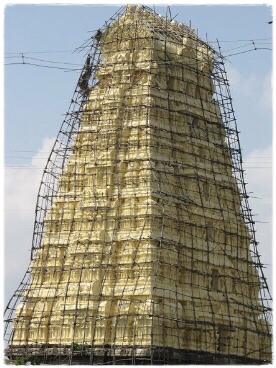
In India Scoffolding of Bamboo is often used, the bamboo poles are bound together with string in a special knot. Scaffolding with Bamboo can reach phenomenal heights in the seemingly Jupitarian creation of building structures.
Purnavasu as we have seen, is the Nakshatra of growth, it is ruled over by the mother of mothers, the question here becomes: What really is growth?
In the sense of Purnavasu Nakshatra, growth is a freeing of the structures that stand in the way of expansion. When no structures obscure the path of Jupiterian expansion, then the infinite reveals itself. Releasing the Karmic structures and patterns that stand before expansive growth, is indeed a task most Tantric.
And so, upon this first full Moon night of the year, we find the ritual of Shakambhari Jayanti. She be the mother of growth and loving nourishment.
we will be working with Purnavasu Nakshatra. This Moon will be touched, and in turn touch us, through being the psychic mirror of the lunar realm of expansive growth, that is Purnvasu.
Purnavasu is a Nakshatra of growth that deeply expands the ritualistic work done on its night. Purnavasu can be taken to translate as fullness of growth.
Purnavasu gives blessing and assistance to bring the seedling of intention to fruition. The planted seed can sprout if nurtured. A ritual lives, if it is honoured and allowed to unfold with careful nurture.
Purnavasu Nakshatra is the Nakshatra that can teach us to look into that which stands in the way of creative growth. It brings into focus, the patterns that keep us in cyclical reality.
The energy invested in a cycle, can be worked with and liberated towards the endless exploration of infinity. This is the vision of Purnavasu’s potential. This is a guiding vision of the Tantric Yogins.
Since time immemorial, Tantrics have honoured the magical lunar cycles of ebb and flow.
Tantric ritual is built upon subtle formulae that work with the energies of the Moon and stars… in their perpetual motion.
The ritual work in the Nakshatra of Purnavasu is very much concerned with the study of our automatic reactions and the cyclical Karmic realities that we revolve and live within.
And further and deeper than that, it is concerned with liberation from the codes and structures that confine the sacred heart

